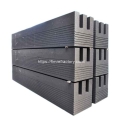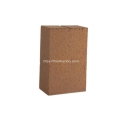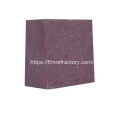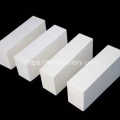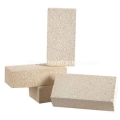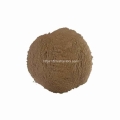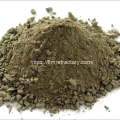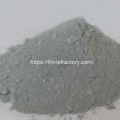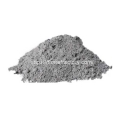- Performance. Innovation. Worldwide. Your trustworthy Refractories Manufacturing Partner--Fireramo
- +86 175 3769 7777
Contact
Contact us on WhatsApp
High Quality Refractory Bricks
Insulation Bricks for Sale
Monolithic Refractory
Graphite Electrode Use Guide
Graphite electrodes play a key role as an important conductive material in metallurgical, chemical and power applications. Proper use and maintenance of graphite electrodes not only ensures efficient energy conduction, but also extends their service life and increases productivity.Fireramo provides you with a detailed graphite electrode user guide to help you select, install and maintain graphite electrodes correctly to ensure reliable operation and excellent performance.

Graphite Electrode Selection
When selecting a graphite electrode, the following factors need to be considered
Application requirements
Select the appropriate type of graphite electrode according to the specific application requirements, such as normal power graphite electrode, high power graphite electrode or ultra-high power graphite electrode. Ensure that the selected electrode can meet the required conductivity requirements.
Electrode Quality
Select high quality graphite electrodes from reliable suppliers to ensure that their material purity, density and mechanical properties meet the requirements. Reliable quality graphite electrodes provide better conductivity and durability.
Transportation, Storage and Use of Graphite Electrodes
Artificial graphite electrodes are hard and brittle, and should be handled with special care. Proper handling can reduce consumption and cost.
- Professional tools should be used to lift graphite electrodes. The use of crowbar is strictly prohibited. Impact and damage should be avoided during transportation.
- Graphite electrodes are not allowed to be immersed in rain, snow or water droplets and should be kept dry. If moisture is found, it should be dried before use. The drying temperature shall not exceed 120℃ and the drying time shall not be less than 48h.
- Don’t pile it near the sundries such as clay and slag, so as not to pollute the surface of graphite electrode and affect the conductive effect.
Correct installation of graphite electrode
Check the electrode
Check the surface of graphite electrode carefully before installation to make sure there is no obvious damage, crack or foreign matter; before connecting the graphite electrode, check carefully whether the electrode connector hole is intact, whether the connector thread is damaged or not, whether the connector bolt is lost or not, and prevent damaging the electrode connector thread of the grounded end when lifting the electrode.
Clean the surface
Clean the surface of the electrode to ensure that there is good contact between it and the contacting parts (e.g. electrode connector or electrode pocket). Use appropriate cleaning agents and tools and avoid substances that may damage the electrode surface.
Proper use of graphite electrodes
- Graphite electrodes should be connected tightly and tilting is not allowed when connecting. A torque wrench should be used to prevent too much or too little force, and the gap should not be more than 0.4mm;
- The electrode holder should be clamped without loosening, with good contact and without arcing. Otherwise, the joints will quickly redden, oxidize and break.
- The electrode lifting device of the electric furnace should be kept stable when it is running. After the furnace cover is repaired, the position of the cover should be checked to see if it is correct. When smelting, seal the cover of the electric furnace with refractory material to prevent the flame in the furnace from oxidizing the upper electrode.
- The gripper should be clamped outside the safety line of the electrode joint hole area.
- When the melting pot is loaded, the big piece is under the bottom and the small piece is on the top. Poorly conductive charges should not be placed on top. During the melting process, the unmelted charge should be handled in time to prevent the collapsed charge from smashing the electrode.
Regular maintenance and repair
Regular maintenance and servicing can prolong the service life of graphite electrodes and ensure stable performance.
Avoid mechanical damage
Avoid violent impact or collision of the electrode during use to prevent surface damage or cracks. Handle and manipulate the electrodes carefully to ensure their safety and integrity.
Temperature control
Control the working temperature of the electrode to avoid exceeding its tolerance range. Excessive temperatures may cause burns or deformation of the electrode, affecting its conductivity and service life.
Cleaning and Maintenance
Clean the surface of graphite electrodes regularly to remove accumulated dust, scum or chemicals. Use appropriate cleaning agents and tools, taking care not to damage the electrode surface. At the same time, make sure that the cleaning process does not contaminate other equipment or the operating environment.
Checking connections
Periodically check the electrode connection parts to ensure that the fasteners are in good condition to prevent loosening or corrosion. If any abnormality is found, repair or replacement measures should be taken promptly.
Disposal
Dispose of used graphite electrodes in an environmentally friendly manner, complying with local environmental laws and regulations. Graphite electrodes may contain some hazardous substances, such as heavy metals, so they need to be disposed of in accordance with relevant regulations to ensure that they do not harm the environment and human health.
We are a professional refractory material supplier, if you have any doubts about graphite electrode or refractory material, you can contact us for free at any time.
Specializing in refractory materials for over 20 years, we provide professional refractory solutions for the global high temperature industry.
Related Posts:
- Causes and solutions to cracking of castables after baking
- Enhancing the Medium Temperature Strength of Refractory Castables
- Ways to ensure the accuracy of refractory brick acceptance results
- Acceptance inspection after cement kiln construction
- Three Common Ways of Damage to the Sliding Nozzle for Ladles
Theme By Fireramo
